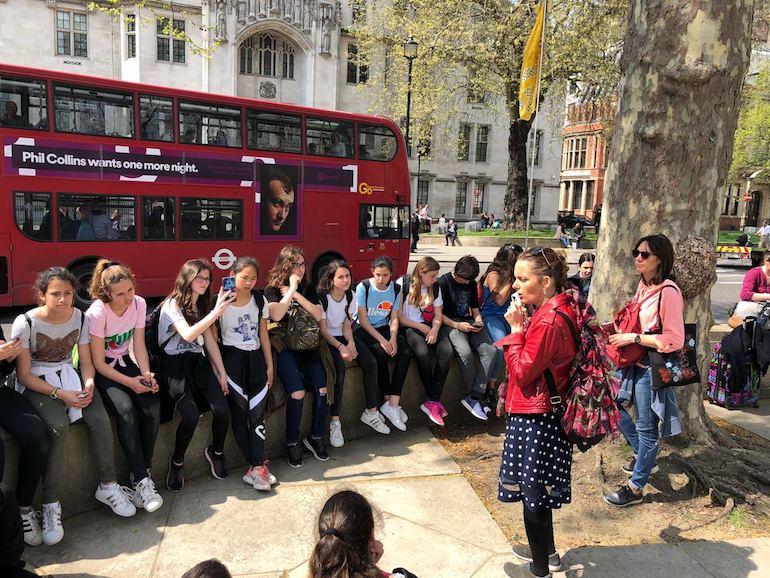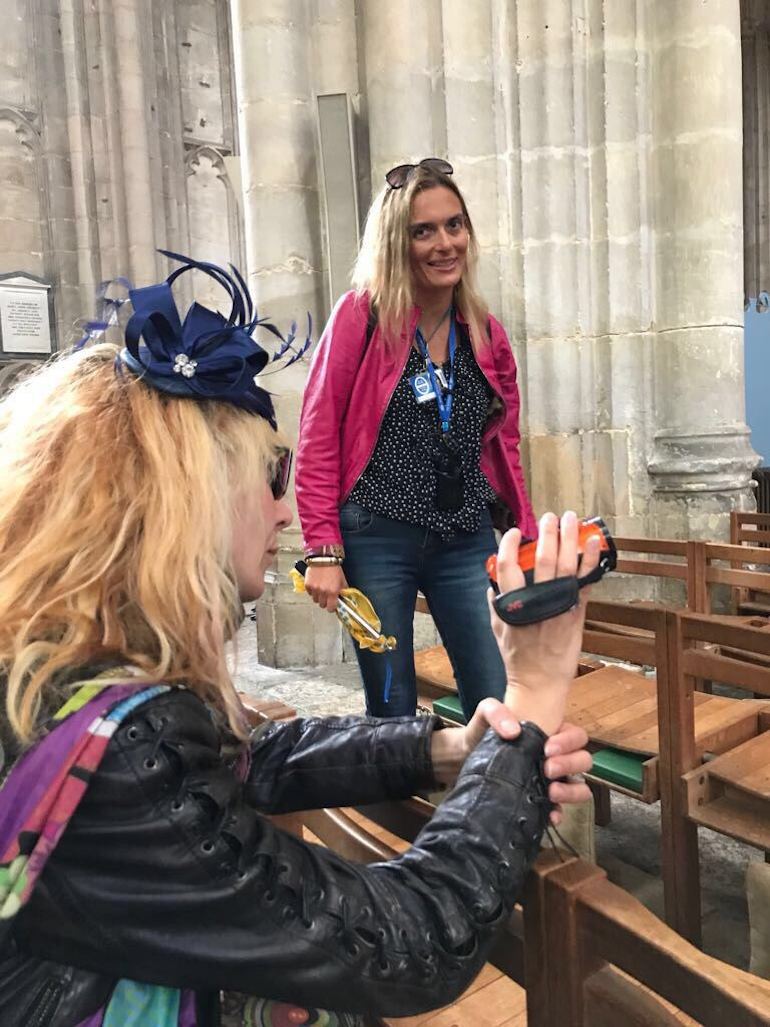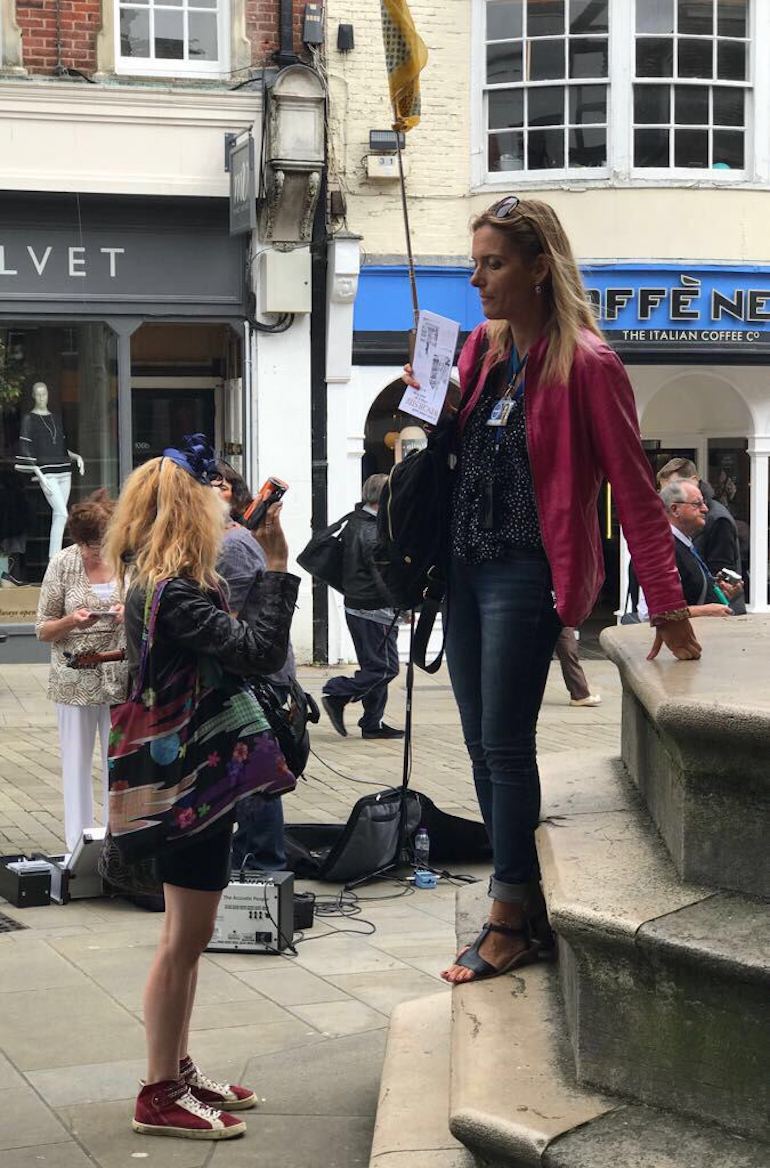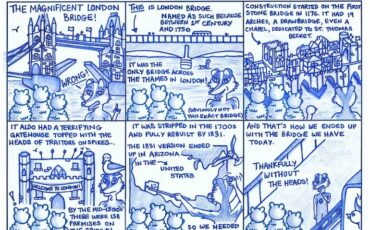Blue Badge Tourist Guides conduct many different types of tours, from individual families to large groups, and each type requires different skills to be successful. Here, Olga Romano shares her experiences of guiding student groups.
I have worked with students my whole life!
I graduated from Saint Petersburg teacher training university in 2000 as a fully qualified senior school English and Spanish language teacher. During my teaching years, I went out with students, accompanying them on school trips, and I have always realized how challenging this work is.
It’s not just about teaching, but also about organising trips, booking tickets, liaising with parents and all the teachers on your trip. Making everyone happy.
Teaching languages is a very special job, let alone teaching languages to teenagers. People aged 12 to 18 are full of emotions, positive and negative, which makes the job even more challenging.
Once we went on a school trip abroad. There were 18 students and two teachers. I was encouraging my students to speak Italian as much as possible because that was their primary foreign language. This was back in 2001, and Rita was our tour guide in Milan.
 Blue Badge Tourist Guide Olga Romano speaks to students outside Westminster Abbey. Photo Credit: © Olga Romano.
Blue Badge Tourist Guide Olga Romano speaks to students outside Westminster Abbey. Photo Credit: © Olga Romano.
An hour before our first appointment, I was sipping my cappuccino in a school bar in Liceo Primo Levi. I was expecting a young, inexperienced language student, with lots of ambition, because I knew she was a professional tourist guide, and in Italy, guides are accredited by the tourist authority. The idea that “only young people can guide students” was reverberating in mind. You can imagine my surprise when I saw a lady in her late 50s! She was absolutely charming and had a kind smile.
I then uttered the most embarrassing phrase of my entire life! I smiled back at her and said “I’m expecting our guide to meet my group in half an hour. Do you know anything about her?” “Yes, I do” the lady said, still smiling – and that moment I realized she was wearing the guide’s badge, which was obscured by her sophisticated scarf! “I am your tour guide!”
Rita changed my view of a tourist guide in one day! Despite actually being over the age of 60 – as I later found out – she was truly and really young in her ways.
So what were the secrets Rita taught me, and why did she make me think about guiding students?
Think back to when you were 13 or 15. Did you like attending lessons? Doing homework? I bet you had other things on your mind: chatting with friends, dancing, looking at boys and girls.
When you have a group of teenagers in front of you, be prepared for them to see you at first as a boring teacher. So instead of starting with a drawn-out lecture on the history of London, you can smile and start with a question: “Hello! What can you tell me about London?”
Some students of course will be shy, but others will begin to answer. Then the moment will come, the moment that every guide – and every teacher – waits for: an emotional bond created between you and the students. This is the most important factor in a successful excursion.
 Blue Badge tourist guide Olga Romano is being filmed by a tourist inside Gloucester Cathedral. Photo Credit: © Olga Romano.
Blue Badge tourist guide Olga Romano is being filmed by a tourist inside Gloucester Cathedral. Photo Credit: © Olga Romano.
For some reason, many guides forget to smile, or their smiles seem forced. Children and adolescents dislike fake feelings, and presenting a sincere smile is essential.
When you work with this age group, try to include games. Do not forget that until recently, they were still playing them, even if they are playing with computers now! The Internet does not always work on the street, so find ways to entertain them without the Internet. One of the games I use goes like this:
Your tourists are divided into two teams. This can be done by gender, boys vs girls or you can create two mixed teams, e.g. by class. At the beginning of your excursion, you alert the teams that there will be a small competition at the end. I recommend playing in groups rather than having individual students give their answers since this can discourage shy students from speaking up.
Leave at least 15 minutes at the end of the tour for the game. You can come up with a few questions ahead of time about what you told them on the tour, or you can, if your imagination is working quickly, come up with the questions on the fly. Choose captains that will answer on behalf of their team.
Ask questions of each team in turn. If someone shouts out an answer out of turn, a ball is taken from their team. You can impose a time limit, using a clock that everyone can see – gather the group in Trafalgar Square and use the clock of St. Martin’s church, for example. When the clock strikes a particular time, then the game is over.
When conducting excursions for students, it is necessary to remember that the duration of a school lesson is on average no more than an hour. So it helps them if you pause from time to time to let them take a break from your voice.
I do not advise overloading students. It makes no sense to demand too much of them. Study trips are meant for relaxation, to be in the company of peers and highlight the new experience of independence, which can be useful later in life.
HAPPY GUIDING STUDENTS IN 2021!
 Blue Badge tourist guide Olga Romano speaks to a group of tourists in Chester City Centre. Photo Credit: © Olga Romano.
Blue Badge tourist guide Olga Romano speaks to a group of tourists in Chester City Centre. Photo Credit: © Olga Romano.







Leave a Reply